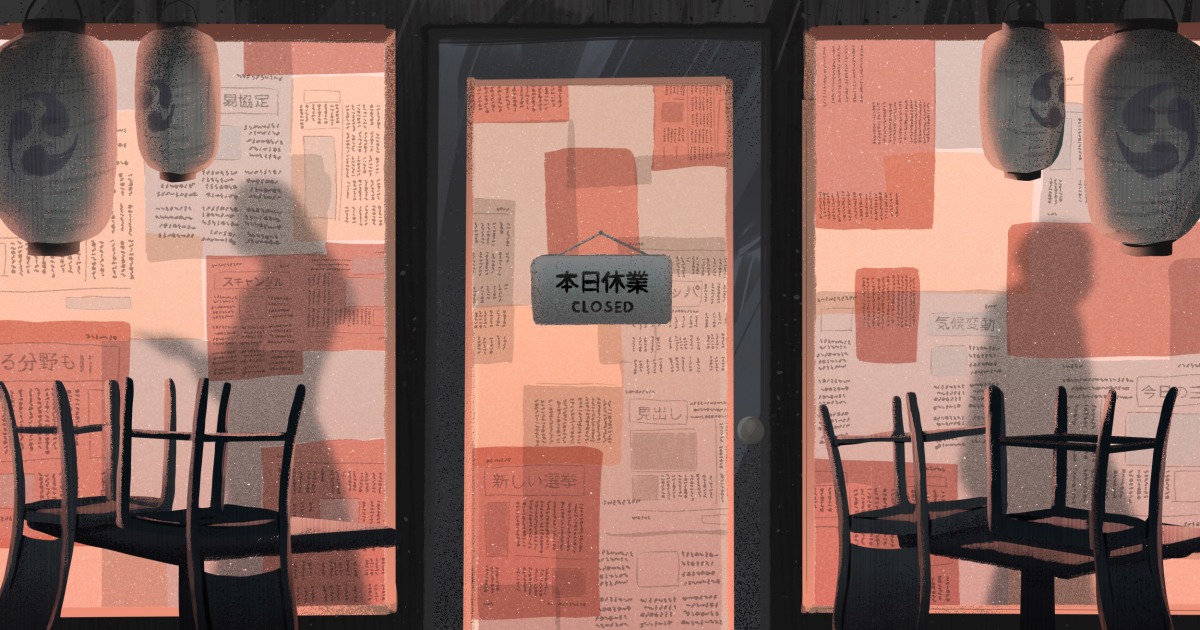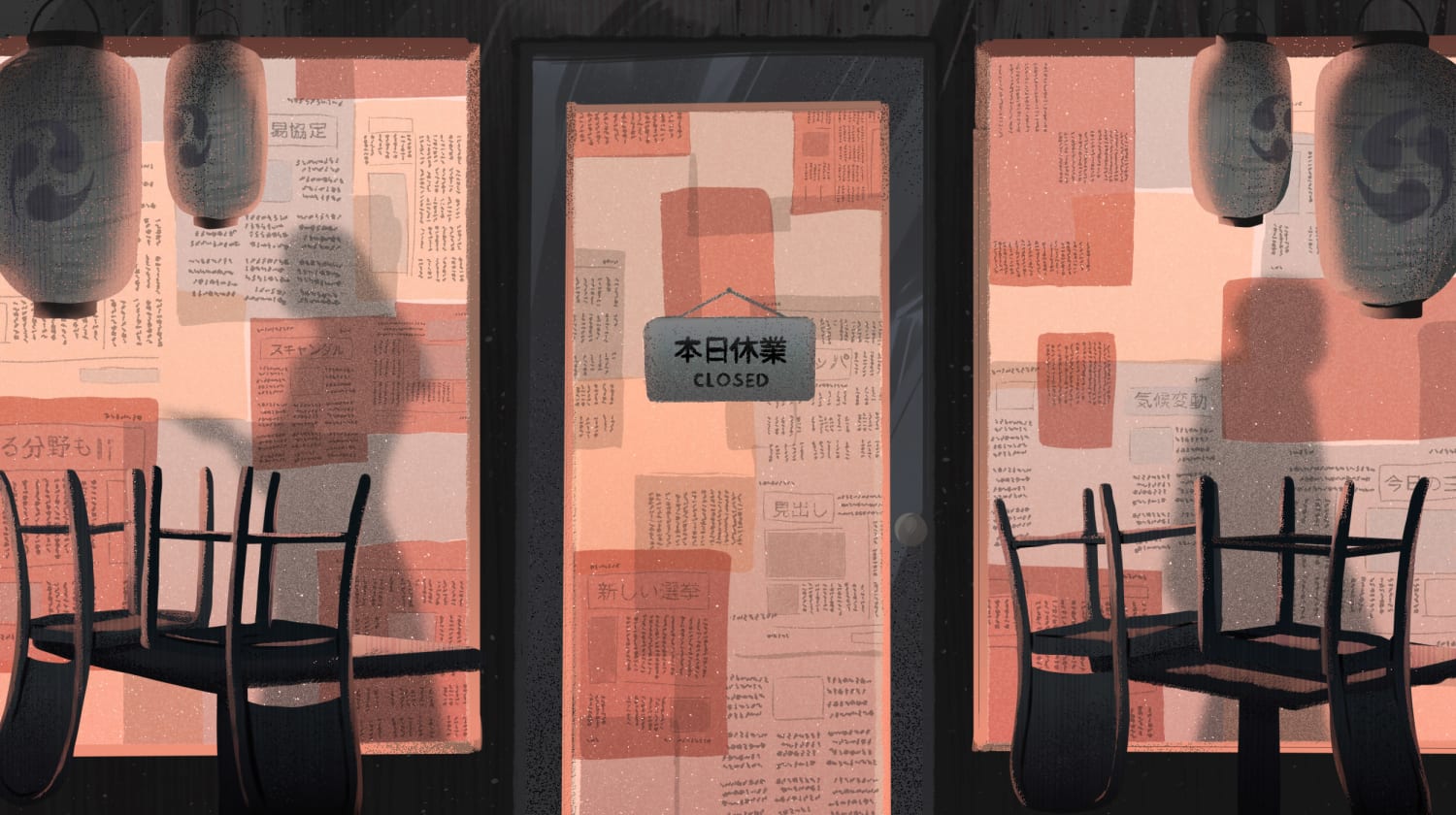
Long before Snapchat and Instagram revolutionized social media with augmented reality face filters, Ryan Kimura opened a photo sticker studio in San Francisco’s Japantown, the oldest Japanese enclave in the United States. PikaPika, a staple in the Japan Center since 2006, has become famous for its purikura booths, which let users digitally decorate their images and print them instantaneously onto stickable selfie strips.
Like many brick-and-mortar businesses, however, it hasn’t been able to welcome any customers since the first citywide lockdown in March. Kimura said he wanted to stay open for the young adults who frequent the space, but a second lockdown this month and a lack of support from his landlord persuaded him to cut his losses and permanently close at the end of year.
“I don’t know how they expect us to pay rent when we’re not generating any revenue,” Kimura told NBC Asian America.
In the U.S.’s three remaining officially designated Japantowns — in San Francisco, Los Angeles and San Jose, California — small businesses like PikaPika have struggled to stay afloat, jeopardizing the survival of the enclaves that have been informal safety nets for generations of low-income Japanese immigrants. While merchants across the country face difficult decisions about whether to stay open, the pandemic is intensifying long-standing pressures in Japantowns that could lead to the collapse of the already declining historic neighborhoods.
‘It seems like every month at least one business closes down’
Among the main stressors are rising real estate values and corporate ownership of commercial spaces.
While Chinatowns and Japantowns offer essential resources like affordable housing, senior centers and houses of worship, property ownership in Chinese strongholds tends to be divided among private developers, family associations and individual landowners. In Japantowns, by contrast, corporations hold far greater control. Two private landlords, Kinokuniya Bookstores of America and 3D Investments, own the three malls that make up San Francisco’s Japan Center, where a vast majority of family-owned restaurants and retailers are located, including PikaPika.
Because developers tend to prioritize protecting the bottom line over preserving historic ethnic communities, the sole corporate ownership system puts mom-and-pop shops in a vulnerable position, said Diane Matsuda, a staff lawyer with Asian Pacific Islander Legal Outreach, a nonprofit that helps provide pro bono legal assistance to about 90 percent of Japan Center’s businesses.
“You can’t have an ethnic cultural district without businesses that are culturally relevant,” Matsuda said. “If we just depended on these landlords coming to the table, we would literally lose Japantown.”
Since it granted a one-month rent deferral in April, Matsuda said, Kinokuniya hasn’t answered any payment negotiation request from tenants. (Kimura, of PikaPika, said that the company hasn’t acknowledged any of his queries about possible concessions but that it continued to send him monthly invoices.) Meanwhile, 3D Investments, Matsuda said, has been “bombarding” tenants in the East and West Malls with aggressive rent collection notices and removal threats, even though a citywide eviction moratorium runs through March. (Recently, Kinokuniya has reached out to a few tenants, but not in response to inquiries about rent negotiation.)
Both 3D Investments and Davis Property Management, a boutique firm that oversees Kinokuniya’s properties, declined to comment.
“It seems like every month at least one business closes down,” said Robert Hsu, the owner of Tokaido Arts, a Japanese woodblock prints shop that his family opened in 1971. “So it’s a little distressing that they haven’t responded to our concerns.”
Hsu said he and some other tenants have been withholding rent to bring Kinokuniya to the negotiating table. He also hopes that the city’s new ordinance, which gives stores with fewer than 10 employees two years to pay back missed rent from this year, will improve communication between the two sides.
“I looked at our 50-year anniversary as a renewal for our business,” said Hsu, a second-generation owner. “I would hope that it’s not the beginning of the end for us.”
In Los Angeles, Little Tokyo faces a similar set of challenges.
Little Tokyo has a more fractured ownership structure. While private landlords own two outdoor shopping complexes, Weller Court and Japanese Village Plaza, a smattering of other commercial spaces are managed by individuals, families and nonprofits like the Little Tokyo Service Center, said Mariko Lochridge, a small-business counselor for the group.
But the mixed ownership setup hasn’t insulated mom-and-pop shops from rent struggles. While tenants in community-owned properties have fared better than those in corporate-owned properties, Lochridge estimated that 70 percent of merchants she advises have had to defer at least one month of payment.
It’s a fight that has been going on for more than a decade.
Since the 2008 recession, 43 businesses that were at least a decade old have permanently shuttered or moved from Japantown partly because of rising rents, according to data from Little Tokyo Service Center. (The neighborhood has more than 415 registered small enterprises.) The group is fighting for community control over the last three undeveloped parcels of city-owned land to use “in a way that complements and supports arts institutions and existing businesses,” Executive Director Erich Nakano said. Instead of high-rises, he said, the spaces should be reserved for affordable housing, cultural centers and green spaces.
Seema Agnani, executive director of the advocacy group National Coalition for Asian Pacific American Community Development, said Japanese enclaves’ proximity to downtown financial and social hubs puts commercial and residential tenants at prolonged risk of displacement.
“Our community shouldn’t have to relocate,” she said, saying organizers and elected officials can work together to ensure that local and nonprofit developers have “first right to ownership” on foreclosed properties after the pandemic.
A history of displacement and the struggle to rebuild
While Covid-19 has exposed the scarcity of resources in Asian enclaves, the crisis didn’t begin this year or even a decade ago. The Japanese diaspora, which first settled in California in the mid-19th century, endured two waves of government-sanctioned evacuations, said Meredith Oda, an associate professor of history at the University of Reno and the author of “The Gateway to the Pacific: Japanese Americans and the Remaking of San Francisco.”
During World War II, scores of Japanese families lost their homes and businesses when they were forced into concentration camps in 1943. Japantown in San Francisco became heavily Black when an influx of migrants from the South, suffering from racist housing policies elsewhere in the city, took over the vacant properties. Although many Japanese merchants were able to sign new leases when they returned, disrepair and overcrowding amplified the neighborhood’s image — in the eyes of elected officials — as a “slum.” By the late 1940s, it had become a primary target for redevelopment.
“A major struggle after the war was rebuilding,” Oda said.
San Francisco’s Japan Center, which opened in 1968, was conceived as a “tourist draw” that would rejuvenate the local economy and attract investment from Japan. Japanese American merchants wanted to buy the space themselves, Oda said, but incarceration stripped them of the social and financial capital to put enough pressure on the city, which accepted the bids of corporate developers.
Mid-century urban renewal “wiped out so many businesses and houses,” said Matsuda, of Asian Pacific Islander Legal Outreach. At its prewar peak, Japantown spanned nearly 40 blocks. Now it has shrunk to six. (A halt in postwar immigration from Japan also contributed to downsizing the historic neighborhood.)
In recent decades, Matsuda said, the number of Japanese enterprises has fallen from a couple of hundred to fewer than 75.
In the 1970s, city redevelopment projects also transformed Los Angeles’ Little Tokyo.
“They were taking out entire buildings,” said Brian Kito, the owner of Fugetsu-Do Confectionary, a 115-year-old mochi shop, which is the oldest Japanese American business in the country. “So many mom-and-pop shops were displaced. We lost a sense of community.”
Kito said his family was forced to move five times in the past century. After they returned from the concentration camps in 1945, they slept in a Buddhist temple for several years while Kito’s father scraped together enough money to buy a new space for Fugetsu-Do. In 1981, during a redevelopment wave, the city evicted the Kitos from a separate bakery operation.
Thanks in part to a boost from stories in Buzzfeed and Business Insider, Kito said, Fugetsu-Do has recovered from a steep drop in revenue during the early stages of the pandemic. But other challenges loom. A new light rail line running through Little Tokyo is scheduled to start construction next year — a project that Kito worries will hike real estate prices and squeeze out struggling merchants.
But right now, Kito’s focus is on the present: helping fellow business owners survive the pandemic.
“I feel for all my neighbors,” he said. “If I don’t help them conquer this, I’ll end up with no neighbors.”
Source: | This article originally belongs to Nbcnews.com









